







Vehicle Owner’s Manual: The owner’s manual that came with your vehicle often contains information about the recommended tire size, inflation pressure, and other important details. Check the “Tires” or “Specifications” section for this information.
Driver’s Side Door Jamb: Open the driver’s side door, and you’ll typically find a placard on the door jamb or the edge of the door. This placard provides information about the recommended tire size, inflation pressure, and load-carrying capacity.
Glove Compartment or Center Console: Some vehicles provide a tire information booklet or a sticker inside the glove compartment or center console. This may include details about tire size, type, and proper inflation.
Tire Sidewall: The sidewall of your tire itself contains a wealth of information. You’ll find the tire size (e.g., 265/65/R17), speed rating, load index, and other specifications imprinted on the sidewall. However, it’s important to note that the recommended tire size for your vehicle may differ from the size on the sidewall.
Online Resources: If you’re still unsure or want to double-check information, you can use online resources provided by tire manufacturers or consult your vehicle manufacturer’s official website. Many tire manufacturers also have online tools to help you find the right tire for your vehicle by entering your car’s make, model, and year.
Always ensure that the tires you choose are appropriate for your specific vehicle, driving conditions, and intended use. If you have any doubts or questions, consult your vehicle manufacturer or a professional tire service.